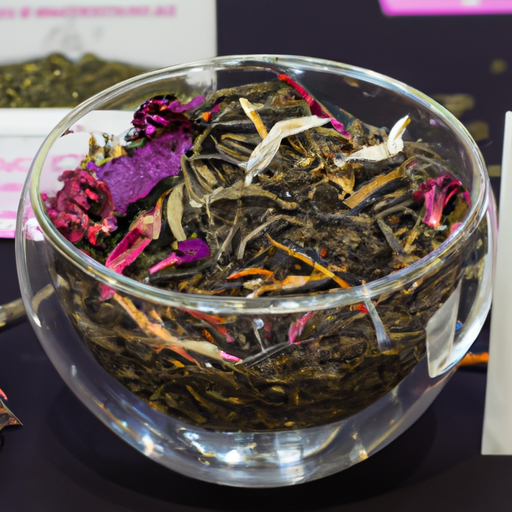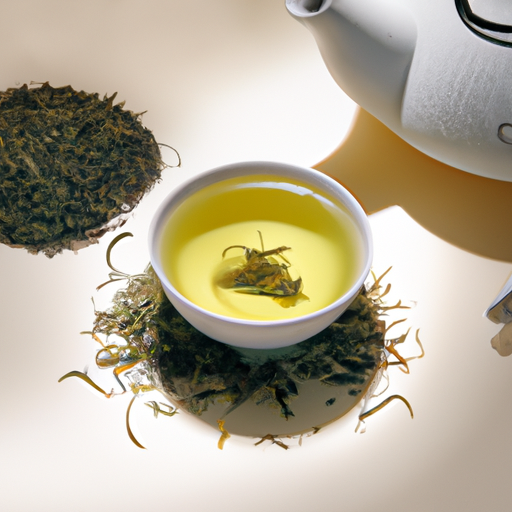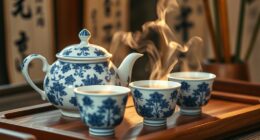Welcome to the complete guide on how to make homemade iced tea easily. I’ll be your go-to source for making this refreshing drink. Homemade iced tea is like a breath of fresh air on a hot summer day, ideal for any event. This guide will reveal the tips and tricks to whip up a tasty glass of iced tea in the convenience of your home.
Think of me as your personal tea sommelier, guiding you through the world of flavors, ingredients, and techniques that will elevate your iced tea game to new heights. From the classic Southern sweet tea to the invigorating mint green tea and the tantalizing peach iced tea, we’ll cover it all.
But it’s not just about the recipes. We’ll delve into the rich history of iced tea, compare it to bottled tea, and uncover the health benefits that this delightful beverage offers. I’ll even share tips on preventing that pesky tea clouding phenomenon.
So grab your favorite tea leaves, some ice cubes, and let’s embark on a journey that will quench your thirst and tantalize your taste buds.
Together, we’ll create the ultimate homemade iced tea experience.
Key Takeaways
- Homemade iced tea offers superior flavor and nutritional value compared to bottled tea.
- Homemade iced tea allows for control over the type and quality of tea used.
- Homemade iced tea provides the ability to customize taste preferences.
- Making homemade iced tea maximizes health benefits by retaining natural antioxidants and beneficial compounds.
What to Use
I always make sure to use high-quality ingredients when making homemade iced tea, as I’ve learned from the Ultimate Guide to Easy Homemade Iced Tea with Recipes. When it comes to choosing the right tea leaves, there are different options to consider.
Black tea is a popular choice for classic Southern sweet tea, while green tea adds a refreshing twist to the flavor. White tea is also a great option, known for its delicate taste.
Steeping methods play a crucial role in achieving the best flavor. For black tea, steeping for 3-5 minutes at a high temperature is recommended. Green tea should be steeped for 2-3 minutes at a lower temperature to avoid bitterness.
Experimenting with different steeping times and temperatures can help you find your preferred flavor profile. By using high-quality tea leaves and following the appropriate steeping methods, you can create a delicious and flavorful homemade iced tea.
Flavoring Options
Experimenting with different herbs, fruits, and spices can enhance the flavor of your iced tea, allowing you to create unique and refreshing combinations. Not only do these additions add depth and complexity to your drink, but they also provide additional health benefits. For a herbal twist, try adding fresh mint leaves, lavender, or chamomile flowers. These herbs not only infuse a delightful fragrance but also have calming properties. Spices like cinnamon, ginger, and cardamom can add warmth and a hint of spice to your tea. For a fruity twist, consider adding slices of citrus fruits like lemon or orange, or try muddled berries for a burst of sweetness. Another option to sweeten your tea is to use fruit juice instead of simple syrup. Pineapple juice, for example, can add a tropical touch to your iced tea. Get creative and explore different flavor combinations to find the perfect blend for your taste buds.
| Herb/Spice | Flavor Profile |
|---|---|
| Mint | Refreshing and cooling |
| Lavender | Floral and soothing |
| Chamomile | Mild and calming |
| Cinnamon | Warm and spicy |
| Ginger | Spicy and invigorating |
Experimenting with different herbs and spices for flavor is a fun way to elevate your homemade iced tea. Additionally, using fruit juice as a sweetening option can provide a natural and fruity sweetness to your drink.
Comparison to Bottled Tea
Comparing homemade iced tea to bottled tea, the flavor and nutritional value of the former often surpasses that of the latter. Here are four reasons why homemade iced tea is superior:
-
Quality ingredients: When making homemade iced tea, you have control over the type and quality of tea used. You can choose loose leaf tea or high-quality tea bags, ensuring a richer and more flavorful brew compared to the mass-produced tea used in bottled versions.
-
Sweetening options: Bottled iced teas often contain high amounts of added sugar or artificial sweeteners. With homemade iced tea, you can control the sweetness by using natural sweeteners like simple syrup or fruit juice, allowing you to customize the taste to your preference.
-
Freshness: Homemade iced tea is made fresh, which means you can enjoy the vibrant flavors and aromas that may be lost in bottled teas that have been sitting on store shelves for extended periods.
-
Nutritional differences: Homemade iced tea retains more of its natural antioxidants and other beneficial compounds compared to bottled teas, which may undergo processing that diminishes their nutritional content. By making your own iced tea, you can maximize the health benefits.
Overall, homemade iced tea offers a superior flavor profile and nutritional value, allowing you to tailor it to your taste preferences while reaping the health benefits of a refreshing beverage.
Frequently Asked Questions
How long does it take to brew homemade iced tea?
On average, brewing homemade iced tea takes about 5-10 minutes, depending on the type of tea and desired strength. To enhance flavor, try steeping tea with herbs, fruits, or spices for added depth and complexity.
Can I use herbal tea for making iced tea?
Using herbal tea for making iced tea has both pros and cons. Pros include unique flavors and potential health benefits. However, some herbal teas may not blend well with traditional iced tea flavors. Popular herbal tea flavors to try include hibiscus, chamomile, and lavender.
What is the best type of tea to use for cold brew iced tea?
For the smoothest and most refreshing cold brew iced tea, I recommend using loose-leaf black tea. Its robust flavor and deep aroma infuse perfectly with cold water. However, don’t hesitate to explore alternative tea options like green or herbal teas for unique and delightful flavors.
How can I make my iced tea less bitter?
To sweeten iced tea, I recommend using simple syrup or fruit juice. To reduce bitterness, try steeping the tea for a shorter time or using less tea leaves. Adding a squeeze of lemon or a pinch of salt can also help balance the flavors.
Are there any health risks associated with consuming homemade iced tea?
There are potential risks associated with consuming homemade iced tea, such as bacterial contamination if not brewed and stored properly. However, when made with quality ingredients and proper hygiene, homemade iced tea can provide health benefits like antioxidants and anti-inflammatory properties.
Conclusion
In conclusion, making homemade iced tea isn’t just easy, but it also allows you to customize the flavors to your liking. By using quality ingredients and avoiding stale or low-quality tea, you can create a refreshing and delicious beverage.
The Ultimate Guide to Easy Homemade Iced Tea provides a wealth of information and recipes to help you on your tea-making journey. So why settle for bottled tea when you can enjoy the satisfaction of making your own? Try it out today and taste the difference for yourself.
Isn’t it time you took control of your iced tea experience?










